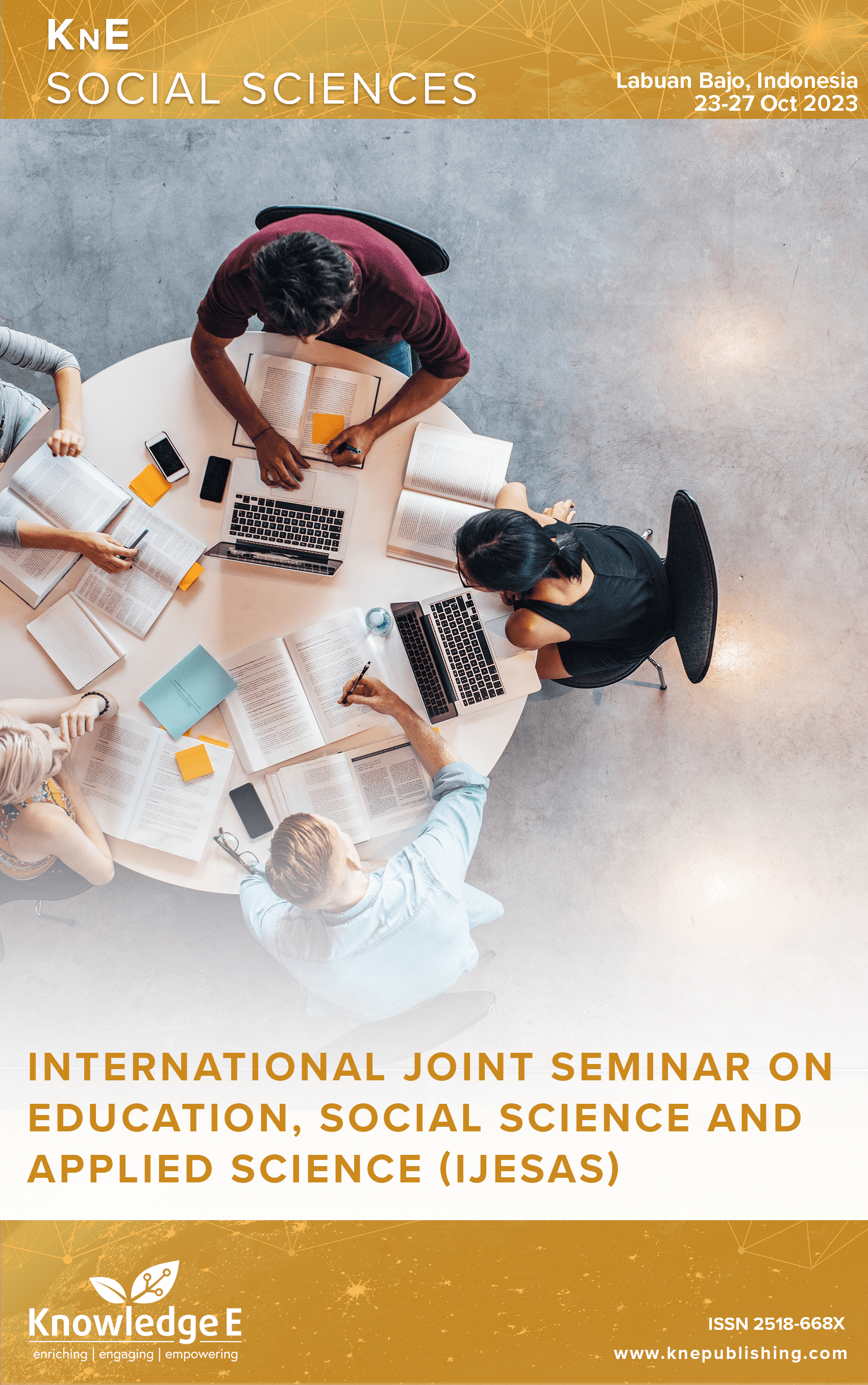Inclusive Identity to Improve Financial Literacy in A Community: Social Identity Perspective
DOI:
https://doi.org/10.18502/kss.v9i19.16533Abstract
Financial inclusion programs are increasingly being echoed by the government at various levels of society. This program aims to open financial access and quality financial services for community groups who have not received it, so far. But in fact, financial inclusion programs are not balanced with increasing financial literacy in the community. One of the efforts made by village-level economic institutions (BUMNag) in implementing financial inclusion, while increasing the financial literacy of their communities is through community-based savings programs. This article analyzes the challenges in improving people’s financial literacy from a social identity perspective. The research uses a qualitative approach with a case study method. This research was conducted in a “Simpanan Bajapuik “ program at one of the Village Owned Enterprises (BUMNag) in West Sumatra. This research found that “Simpanan Bajapuik” is a program implemented with an individual empowerment approach in helping people get community-based financial access. In addition, this article finds that identity conflicts are the main obstacle in implementing the “Simpanan Bajapuik” program. From the perspective of social identity, this article analyzes the active participation of community members in the “Simpanan Bajapuik” program that can overcome multiple identity conflicts experienced by other community members. This article contributes to explaining aspects of the relationship between individuals and between groups, in the process of financial inclusion and increasing financial literacy through the “Simpanan Bajapuik” program policy.
Keywords: financial inclusion, financial literacy, financial management, social identity theory
References
Nair J, Jain MK. Unbanked to banked: Reintermediation role of banks in egovernment services for financial inclusion in an Indian context. J Asia Bus Stud. 2022;16(2):354–70. DOI: https://doi.org/10.1108/JABS-10-2020-0420
David-West O, Oni O, Ashiru F. Diffusion of innovations: Mobile money utility and financial inclusion in Nigeria. Insights from agents and unbanked poor end users. Inf Syst Front. 2022;24(6):1753–73. DOI: https://doi.org/10.1007/s10796-021-10196-8
Kim KT, Xiao JJ, Porto N. “Financial inclusion, financial capability and financial fragility during COVID-19 pandemic.” International Journal of Bank Marketing. p. 2023. DOI: https://doi.org/10.1108/IJBM-07-2023-0373
Demirgüç-Kunt A, Klapper L, Singer D, Ansar S, Hess J. “The Global Findex Database 2017: Measuring financial inclusion and opportunities to expand access to and use of financial services.” World Bank Economic Review. 2020;34(2018):S2–S8. DOI: https://doi.org/10.1093/wber/lhz013
Kamran S, Uusitalo O. “How informal financial service institutes facilitate the financial inclusion of low-income, unbanked consumers.” International Journal of Bank Marketing. p. 2024. https://doi.org/10.1108/IJBM-03-2023-0148. DOI: https://doi.org/10.1108/IJBM-03-2023-0148
Polloni-Silva E, da Costa N, Moralles HF, Sacomano Neto M. Does financial inclusion diminish poverty and inequality? A panel data analysis for Latin American Countries. Springer Netherlands; 2021. https://doi.org/10.1007/s11205-021-02730-7. DOI: https://doi.org/10.1007/s11205-021-02730-7
Asongu SA, Nnanna J, Acha-Anyi PN. Inequality and gender economic inclusion: The moderating role of financial access in Sub-Saharan Africa. Econ Anal Policy. 2020;65:173–85. DOI: https://doi.org/10.1016/j.eap.2020.01.002
N’dri LM, Kakinaka M. Financial inclusion, mobile money, and individual welfare: the case of Burkina Faso. Telecomm Policy. 2020;44(3):101926. DOI: https://doi.org/10.1016/j.telpol.2020.101926
Kawamura T, Mori T, Motonishi T, Ogawa K. Is financial literacy dangerous? Financial literacy, behavioral factors, and financial choices of households. J Jpn Int Econ. 2021;60(February):101131. DOI: https://doi.org/10.1016/j.jjie.2021.101131
Kurowski Ł. Household’s Overindebtedness during the COVID-19 Crisis. Risks. 2021;9(4):1–19. DOI: https://doi.org/10.3390/risks9040062
Munyuki T, Jonah CM. The nexus between financial literacy and entrepreneurial success among young entrepreneurs from a low-income community in Cape Town: A mixed-method analysis. Journal of Entrepreneurship in Emerging Economies. 2022;14(1):137–57. DOI: https://doi.org/10.1108/JEEE-01-2020-0020
Okello Candiya Bongomin G, Mpeera Ntayi J, Akol Malinga C. Analyzing the relationship between financial literacy and financial inclusion by microfinance banks in developing countries: social network theoretical approach. Int J Sociol Soc Policy. 2020;40(11/12):1257–77. DOI: https://doi.org/10.1108/IJSSP-12-2019-0262
Arifin B, Wicaksono E, Helbra R, et al. Village fund, village-owned-enterprises, and employment : evidence from Indonesia. J Rural Stud. 2020;79(April):382–94. DOI: https://doi.org/10.1016/j.jrurstud.2020.08.052
Kania I, Anggadwita G, Alamanda DT. A new approach to stimulate rural entrepreneurship through village-owned enterprises in Indonesia. Journal of Enterprising Communities: People and Places in the Global Economy. 2021;15(3):432–50. DOI: https://doi.org/10.1108/JEC-07-2020-0137
Rahayu MJ, Mukaromah H, Mulyanto M. Social capital-based strategy of sustainable village-owned enterprises (BUMDes) development. Int J Soc Econ. 2024;51(3):297– 312. DOI: https://doi.org/10.1108/IJSE-10-2022-0700
Kry S, Sasaki N, Datta A, Abe I, Ken S, Tsusaka TW. “Assessment of the changing levels of livelihood assets in the Kampong Phluk community with implications for community-based ecotourism.” Tourism Management Perspectives. vol. 34, no. October 2018, p. 100664, 2020. https://doi.org/10.1016/j.tmp.2020.100664. DOI: https://doi.org/10.1016/j.tmp.2020.100664
Tortia EC. Capital as common-pool resource: Horizon problem, financial sustainability and reserves in worker cooperatives. Journal of Co-operative Organization and Management. 2021;9(2):100137. DOI: https://doi.org/10.1016/j.jcom.2021.100137
Hsiao WC, Yip W. “Financing and provision of healthcare for two billion people in low-income nations: Is the cooperative healthcare model a solution?” Social Science and Medicine. vol. 345, no. November 2021, p. 115730, 2024. DOI: https://doi.org/10.1016/j.socscimed.2023.115730
Czernek-Marszałek K. “Social embeddedness and its benefits for cooperation in a tourism destination.” Journal of Destination Marketing and Management. 2020;15(November 2019):100401. https://doi.org/10.1016/j.jdmm.2019.100401. DOI: https://doi.org/10.1016/j.jdmm.2019.100401

